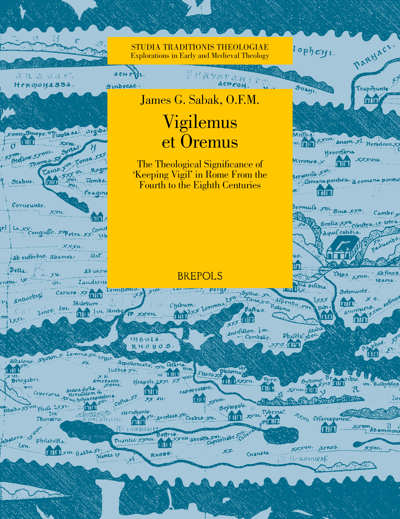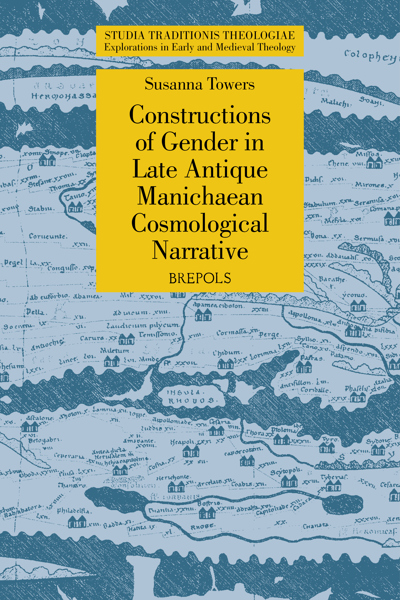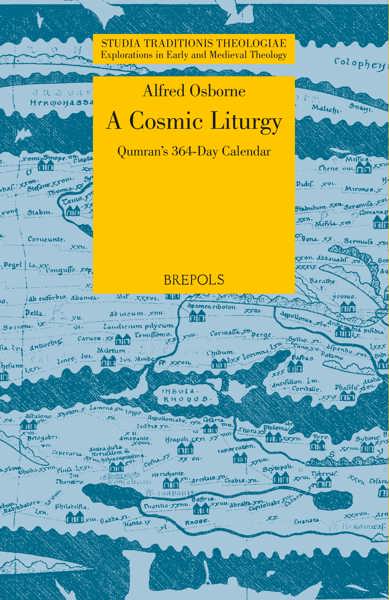
From Topography to Text: The Image of Jerusalem in the Writings of Eucherius, Adomnán and Bede
Rodney Aist
- Pages: xxiv + 262 p.
- Size:156 x 234 mm
- Illustrations:11 b/w, 10 tables b/w., 3 maps b/w
- Language(s):English
- Publication Year:2019
- € 70,00 EXCL. VAT RETAIL PRICE
- ISBN: 978-2-503-58075-3
- Paperback
- Available
- € 70,00 EXCL. VAT RETAIL PRICE
- ISBN: 978-2-503-58076-0
- E-book
- Available
A break-out study on Adomnán’s De locis sanctis and the Jerusalem pilgrim texts, From Topography to Text uses new methodological findings on the Christian topography of Jerusalem to examine the source material, religious imagination and mental maps in the related writings of Eucherius, Adomnán and Bede.
« Au total, on a ainsi une approche renouvelée des récits de pèlerinage, qui est la bienvenue dans une domaine ou on pouvait craindre que tout ait été dit. » (C. Deluz, dans Revue d’histoire ecclésiastique, 3-4, 2019, p. 995)
Rodney Aist is a Jerusalem scholar with a specialty on Christian topography and the pre-Crusader pilgrim texts.
From Topography to Text: The Image of Jerusalem in the Writings of Eucherius, Adomnán and Bede uses topographical detail to examine the source material, religious imagination and the image of Jerusalem in three related Latin texts from the fifth, seventh and eighth centuries. The work introduces an original methodology for analyzing the Jerusalem pilgrim texts, defined by their core interest in the commemorative topography of the Christian holy places. By newly identifying the topographical material in Adomnán’s description of Jerusalem, the study exposes key distortions in the text, its exclusive intramural focus on the Holy Sepulchre and the eschatological image of New Jerusalem that emerges from its description of contemporary Jerusalem. The study verifies the post-Byzantine provenance of Adomnán’s topographical material, namely, the oral report of Arculf, thus redressing scholarly ambivalence regarding Adomnán’s contemporary source.
The new insights into Adomnán’s De locis sanctis, including its mental map of Jerusalem, provide a template with which to analyze the text’s relationship with the writings of Eucherius and Bede. While Bede’s De locis sanctis has commonly been regarded as an epitome of Adomnán’s work, when the sequence, structure and images of the texts are compared, Eucherius not Adomnán is, for Bede, the authoritative text.
From Topography to Text offers a significant discussion on the Jerusalem pilgrim texts and the Christian topography of the Holy City, while analyzing the image of Jerusalem in the writings of three remote authors who never set foot in the city.
1. Introduction
2. The Jerusalem Pilgrim Texts
2.1. Premises
2.2. A Topographical Methodology
2.2.a. The Four Components of Topographical Descriptions
2.2.a.1. Commemoration
2.2.a.2. Location
2.2.a.2.a. Duplicate and Translated Sites
2.2.a.2.b. Biblical Descriptions of Location
2.2.a.3. Appearance
2.2.a.4. Sequence
2.2.a.5. Applying the Four-Fold Methodology
2.2.b. Topographical Templates
2.2.c. Commemorative Credibility
2.2.d. Religious Imagination
2.3. Assessing Textual Images of Jerusalem
2.4. Summary
3. Eucherius’ Letter to Faustus
3.1. The Name of Jerusalem
3.2. Mount Sion
3.3. The Holy Sepulchre
3.4. The Temple
3.5. The Pool of Bethesda and the Spring of Siloam
3.6. Extramural Jerusalem
3.7. Eucherius’ Image of Jerusalem
3.8. Format and Sources
4. Adomnán’s De locis sanctis
4.1. Approaches and Premises
4.1.a. Adls as Pilgrim Text
4.1.b. The Internal Witness of Adls
4.1.c. The Role of Arculf
4.1.d. Adls’ Supplemental Sources
4.1.e. The Three Books of Adls
4.2. The City of Jerusalem
4.2.a. Adls 1.1 as Prologue
4.2.b. Intramural Jerusalem
4.2.b.1. Entering Jerusalem
4.2.b.2. The Complex of the Holy Sepulchre
4.2.b.3. The Omission of the Pool of Bethesda
4.2.b.4. The Extramural Status of Holy Sion
4.2.c. Extramural Jerusalem
4.2.c.1. The Jehoshaphat Valley
4.2.c.2. The Jephonias Monument
4.2.c.3. Mount Sion
4.2.c.4. The Interval of Adls 1.20
4.2.c.5. The Mount of Olives
4.3. Maps and Resources
4.3.a. The Jerusalem Circuit
4.3.b. ‘Arculf in Jerusalem’
4.4. Conclusion
4.4.a. Adls’ Image of New Jerusalem
4.4.b. Adomnán’s use of Eucherius
4.4.c. Mapping Jerusalem
5. Bede’s De locis sanctis
5.1. Bdls as Epitome
5.2. The Purpose of Bdls
5.3. Scholarship on Bdls
5.4. Bede and His Sources: Adomnán and Eucherius
5.4.a. Bede’s use of Adls
5.4.b. Bede’s use of Eucherius
5.5. The Jerusalem Material of Bede’s De locis sanctis
5.5.a. Bdls 1: The Area of Jerusalem
5.5.b. Bdls 2: Intramural Jerusalem
5.5.b.1. Entering Jerusalem
5.5.b.2. The Complex of the Holy Sepulchre
5.5.b.3. The Temple
5.5.b.4. The Pool of Bethesda and the Spring of Siloam
5.5.b.5. The Church of Holy Sion
5.5.b.6. The Column of the Miraculous Healing
5.5.c. Bdls 3: The Tree of Judas and Aceldama
5.5.d. Bdls 4: The Cloth Relics of Jerusalem
5.5.e. Bdls 5.1: Leaving Jerusalem
5.5.f. Bdls 5: The Jehoshaphat Valley
5.5.f.1. The Tower of Jehoshaphat
5.5.f.2. The Tombs of Simeon and Joseph
5.5.f.3. The Church of Mary’s Tomb
5.5.f.4. The Grotto of Gethsemane
5.5.g. Bdls 6: The Mount of Olives and its Holy Places
5.5.g.1. The Church of the Ascension
5.5.g.2. The Tomb of Lazarus
5.5.g.3. The Eleona
5.6. Summary of Bede’ De locis sanctis
6. Conclusion
Appendix 1: Adls and the Post-Byzantine Sources
Appendix 2: A Review of O’Loughlin and the Arculf Debate
Appendix 3: Peter of Burgundy




